A new scientific manuscript was published in OPTICA Optics Express Journal with contributors from Sorbonne Université, KTH Royal Institute of Technology, RISE Research Institutes of Sweden, RTU Institute of Telecommunications – Vjaceslavs Bobrovs, Sandis Spolitis, Xiaodan Pang, Oskars Ozolins and Toms Salgals.
What is the paper about?
High bitrate mid-infrared links using simple (NRZ) and multi-level (PAM-4) data coding schemes have been realized in the 8 µm to 14 µm atmospheric transparency window. The free space optics system is composed of unipolar quantum optoelectronic devices, namely a continuous wave quantum cascade laser, an external Stark-effect modulator and a quantum cascade detector, all operating at room-temperature. Pre- and post-processing are implemented to get enhanced bitrates, especially for PAM-4 where inter-symbol interference and noise are particularly detrimental to symbol demodulation. By exploiting these equalization procedures, our system, with a full frequency cutoff of 2 GHz, has reached transmission bitrates of 12 Gbit · s 24 −1 NRZ and 11 Gbit · s −1 PAM-4 fulfilling the 6.25 % overhead hard-decision forward error correction threshold, limited only by the low signal-to-noise ratio of our detector.
The results of the paper.
During the research a free-space, high-bitrate mid-infrared link based on unipolar quantum
optoelectronic devices and multi-level data coding was demonstrated. Record 12 Gbit · s−1 NRZ and 10 Gbit · s−1 PAM-4 signals are successfully transmitted over the system and received with BER below the 6.25 %-OH HD-FEC threshold. For the NRZ signals, applying pre- and post-processing does not bring substantial improvements as the system is limited by SNR, whereas more significant improvement is observed for the PAM-4 signals after the digital equalization. The heavy electronic noise introduced by the amplifiers due to the low responsivity of our QCD prevents software processing from enhancing the throughput of the link. For the same reason, denser data transmission schemes would not improve this setup even with software processing.
More information can be found on the OPTICA webpage.
Find out more on the research of the Institute of Telecommunications on the projects page and blog page related to research papers.

